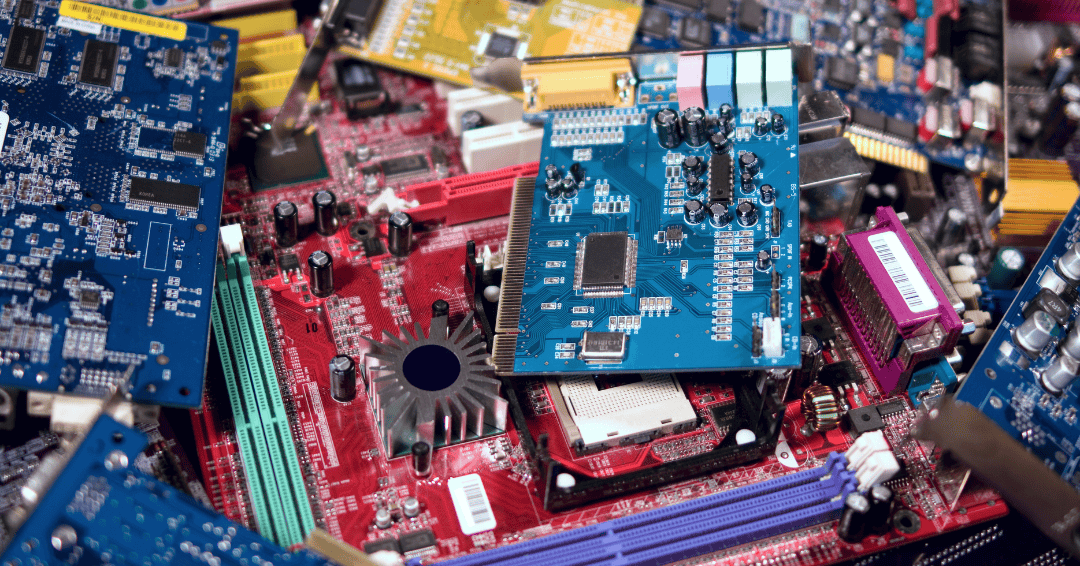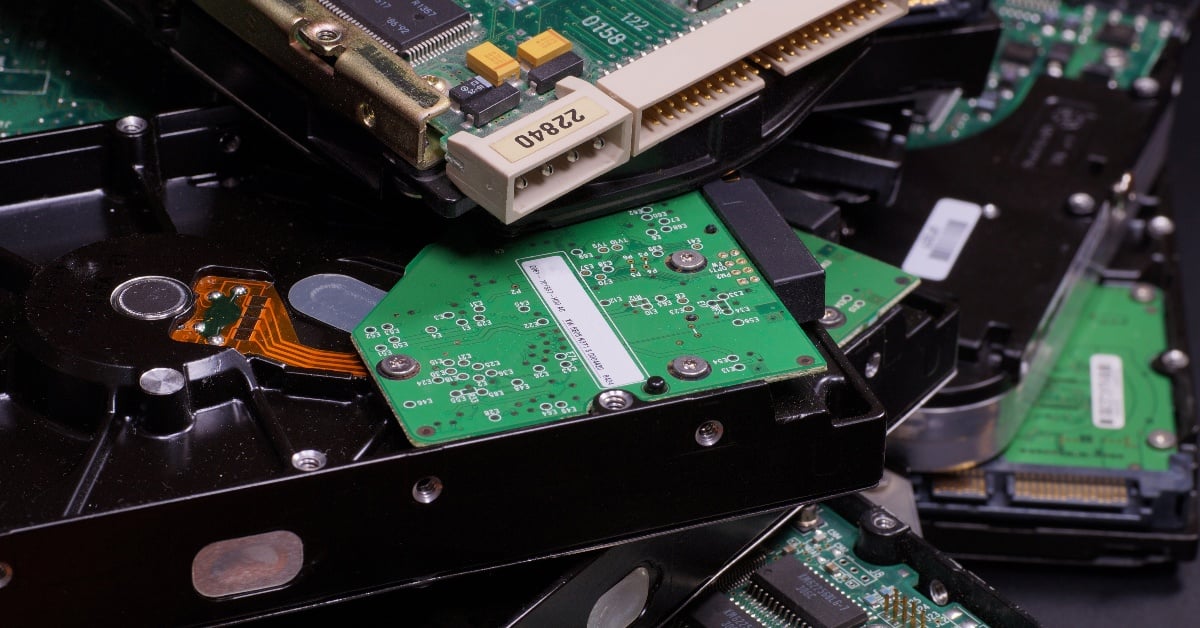Information Technology and AI is at the forefront of nearly every company's operations. It's critical to success, whether processing transactions, communicating with customers or managing operations.
As such, companies invest heavily in IT assets to ensure they have the tools to reach their business goals. With this demand, Original Equipment Manufacturers (OEMs) and data centers (DCs) must also consider how they responsibly handle IT assets and facilitate successful IT asset recovery.
As assets become outdated or reach the end of their lifecycle, they can become a burden for the organization; assets often depreciate to zero on the books, but budgets aren’t always set aside for disposal.
To tackle this issue, IT asset disposition (ITAD), sometimes known as IT asset recovery (ITAR), is essential to the way an organization handles its IT assets.
IT asset value recovery involves identifying and recovering the value of surplus, retired or end-of-life IT assets. Done right, it results in benefits such as maximizing value recovery and promoting sustainable business practices.
Overall, ITAD is a consultative process in which your service provider manages equipment and recommends the most appropriate routing for your assets to maximize value recovery and keep sustainability in mind.
Why is IT asset recovery important for businesses?
Recovering the value of IT assets is crucial as, if managed correctly, it can generate funds for your business and increase the circularity of your technology use. It can also contribute to resource and use optimization, ensuring IT assets are used effectively while minimizing waste, contributing to the circular economy.
As businesses grow and look for greater technological efficiencies, it’s natural for them to upgrade their IT assets. This can often leave older assets that are surplus to requirements.
By recovering the value of these assets through responsible disposition and remarketing, your organization can offset the cost of acquiring new assets, leading to cost savings.
On top of this, recovering the value of IT assets is important because it supports sustainable business practices. As consumers and governments become more aware of the environmental impact of electronic waste, organizations need to take responsibility for their IT assets’ end-of-life.
Recovering value from your IT assets using remarketing and recycling ensures your organization handles its IT assets responsibly, reducing its environmental footprint and contributing to a sustainable future. This can be done by selling recovered assets and component parts, reusing equipment and parts within your organization or recovering materials from recycling.
It also helps to support your organization’s corporate social responsibility (CSR) goals. Demonstrating a commitment to responsible IT asset management — such as making carbon savings by reusing IT equipment instead of buying new — means your organization will enhance its reputation with your customers, investors and other stakeholders.
IT asset recovery: The common pitfalls
To maximize the benefits of IT asset recovery, it’s vital to ensure your processes are meeting the correct standards in the following areas:
1. Environmental risk associated with IT assets
Some IT asset recovery providers may not have environmentally responsible disposal methods in place, which can lead to negative environmental impacts.
It’s key to ensure the provider has proper certifications and adheres to relevant environmental regulations, such as the R2 (Responsible Recycling) certification program, the Waste Electrical and Electronic Equipment (WEEE) directive, the Restriction of Hazardous Substances (RoHS) directive and the Basel Convention.
2. Lack of transparency and reporting on IT asset value recovered
Some IT asset recovery providers may not provide clear and transparent reporting on the value of recovered IT assets, which can make it difficult to assess the success of the program.
Choosing a provider that provides clear and transparent reporting will help your organization monitor your IT asset recovery process effectively. This can be even more useful to your organization if your provider has an online portal allowing you to track the progress of your assets and parts throughout the disposition process.
How IT asset value recovery can differ by country?
IT asset value recovery can differ by country depending on factors such as differences in regulations, cultural norms and local market conditions.
This is why it’s important to find the right provider to make the most of ITAR.
1. Choose the right IT asset value recovery partner, which:
-
Offers Enhanced services, such as managed deployment, upgrades, imaging, MAR licensing, keyboard respraying and polishing phones to extend the lifecycle of equipment.
-
Is located in the same regions of your business (allows resale into the same region, such as for keyboard variations).
-
Has global resale capabilities in multiple regions.
-
Has multiple sales channels.
-
Has Recycling knowledge and capabilities to identify what should be recycled and not placing redundant equipment back into the business or on sale.
-
Is a responsible, managed recycling process for assets not suitable for resale.
-
Offers owned and operated facilities — fewer people in the supply chain helps to optimize IT asset value recovery and shares.
As well as the different aspects of a successful provider to consider, there are regulations and market conditions to also be aware of. Here are 4 areas:
2. Data security regulations
Different countries have different data security regulations that govern how IT assets must be disposed of to ensure the secure erasure of all sensitive data.
For example, the European Union's General Data Protection Regulation (GDPR) requires organizations to ensure all personal data is securely erased from IT assets before disposal.
In contrast, other countries may have less stringent data security regulations, which can increase the risk of data breaches.
3. Environmental regulations
Countries have varying regulations around electronic waste disposal, which can impact how IT assets are recovered for value.
For example, some countries have strict regulations around electronic waste disposal, which can limit the options for IT asset recovery. In contrast, other countries may have less stringent regulations, which can lead to negative environmental impacts.
4. Local market conditions
The market for IT asset recovery can differ by country, impacting the potential returns on IT assets. For example, the demand for certain types of IT assets can vary by country, leading to differences in pricing.
Additionally, cultural norms around the use of IT assets can impact the demand for certain types of IT assets, such as smartphones and laptops. There are also local and regional customizations to keep in mind, such as keyboard layouts and characters.
5. Availability of IT asset recovery providers
The availability of IT asset recovery providers can differ by country, impacting the options available to organizations.
For example, some countries may have a limited number of IT asset recovery providers, which can lead to higher prices or lower-quality services.
How to ensure maximized value of your IT assets?
Recovering the value of IT assets is a critical aspect of IT asset management that can offset the cost of refreshing and upgrading programs, support sustainable business practices and also contribute to your ESG goals and objectives.
To maximize your assets’ potential, it’s important to choose an IT asset recovery provider that has a proven track record, a network of sites that meet your needs and complete, end-to-end technology lifecycle services.
The provider should offer competitive pricing, robust asset tracking capabilities, and clear and transparent reporting. Ensure your IT provider has a wide spectrum of sales channels, from consumers sales to remanufacturing, in order to get the best value for your obsolete IT.
IT asset recovery contributes to IT’s circular economy, helping you to align with your company’s overarching sustainability strategy.
There are many things your IT department can do to become more streamlined and sustainable, but implementing these processes can be challenging. That’s why we’ve put together a Sustainable Disposition Checklist, to ensure you’re not only getting the most from your disposition process, but making it as sustainable as possible.







